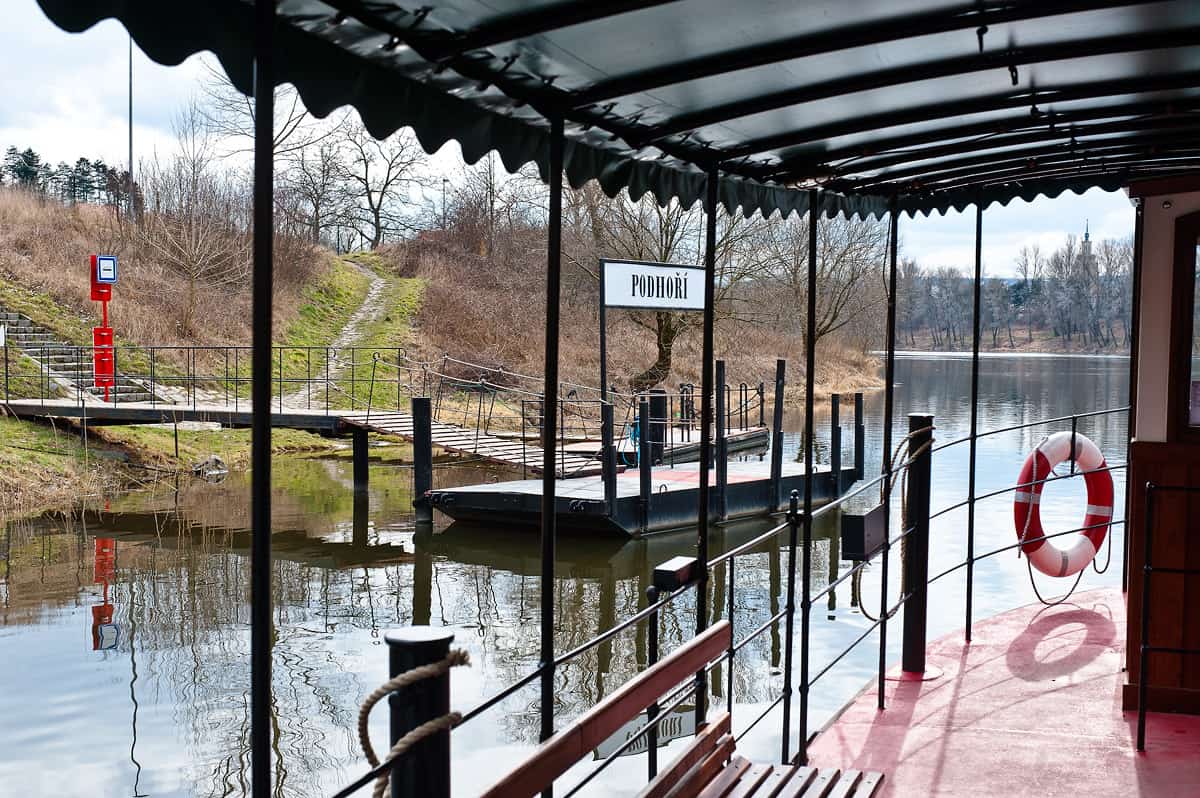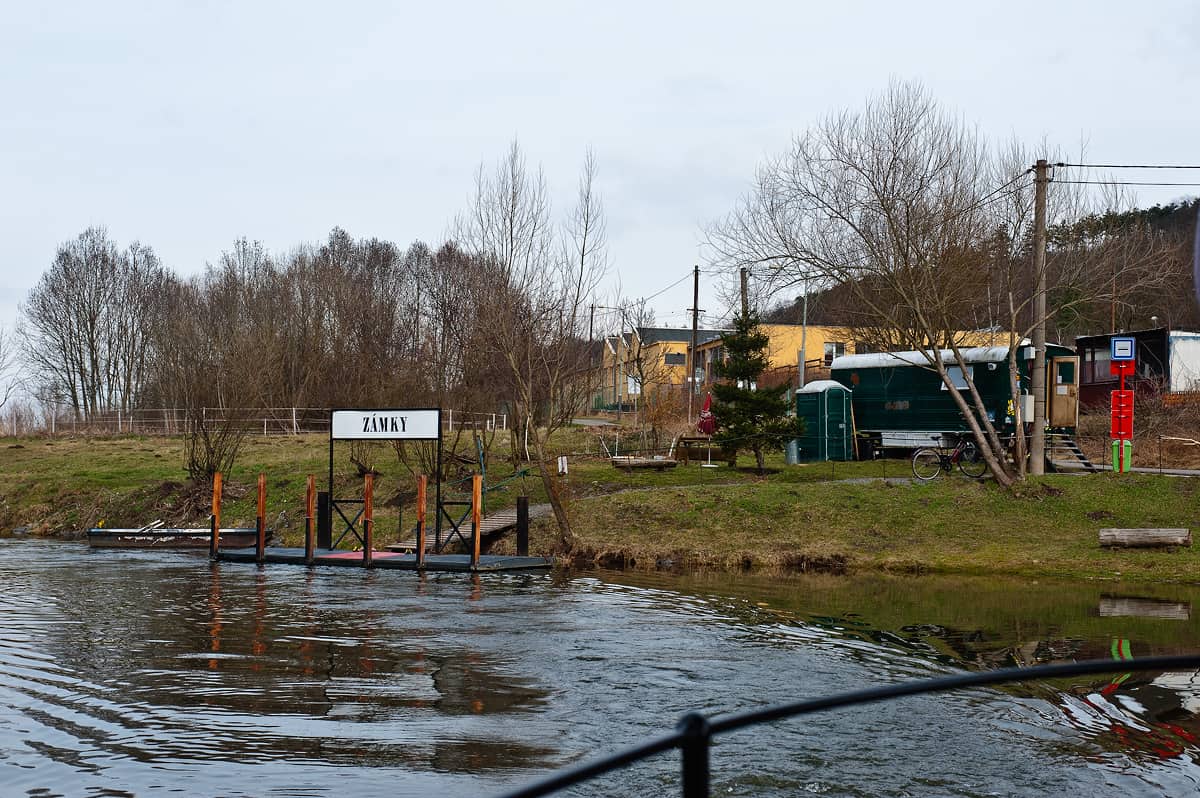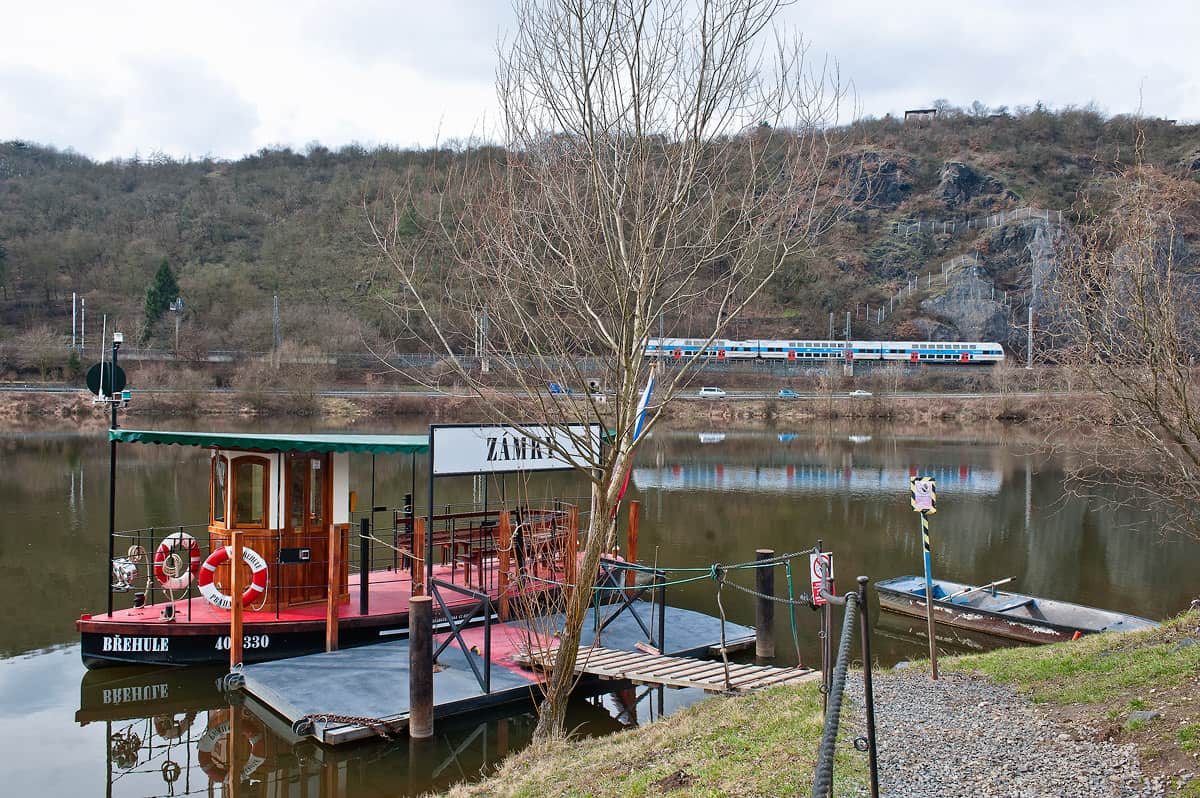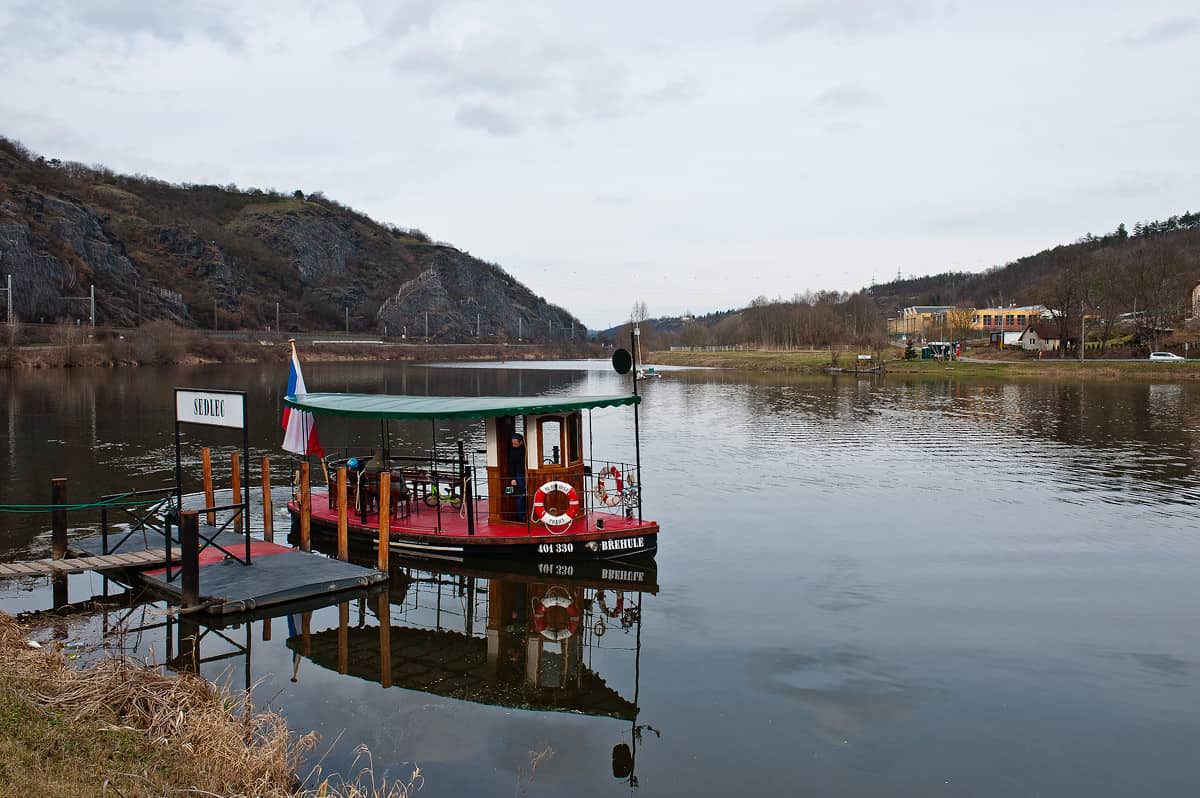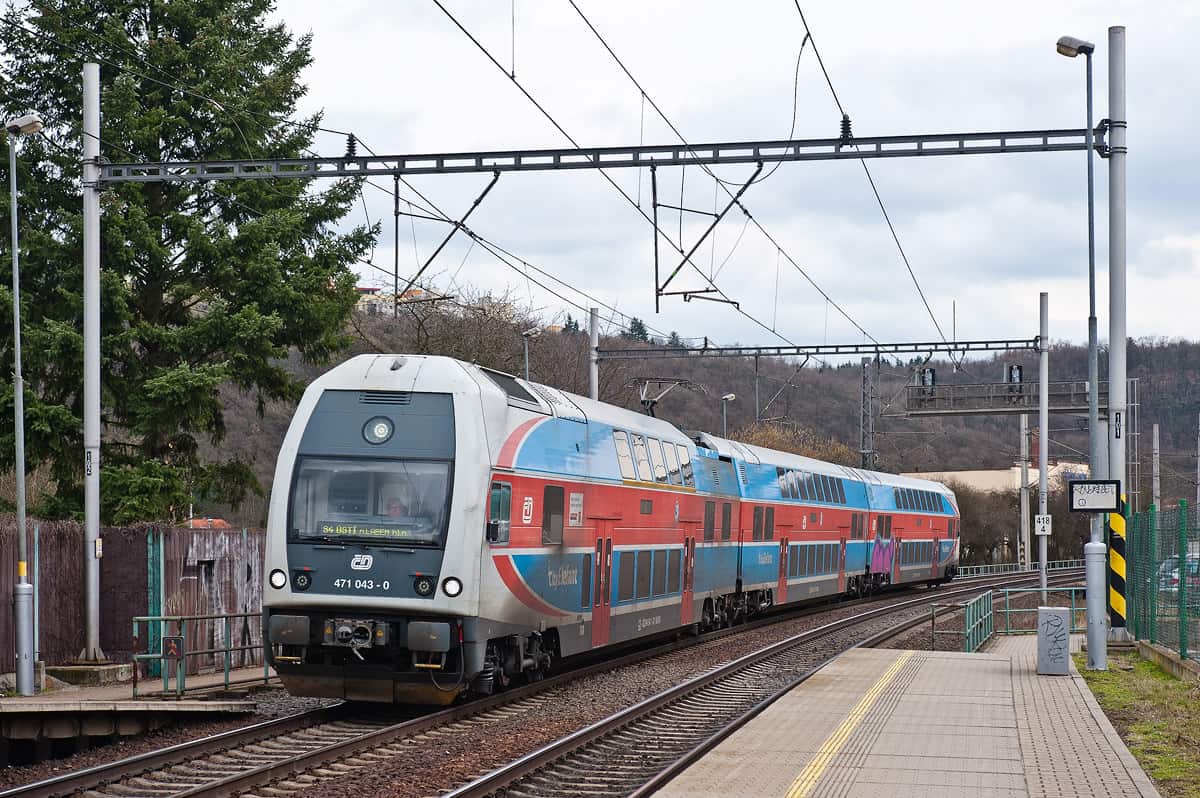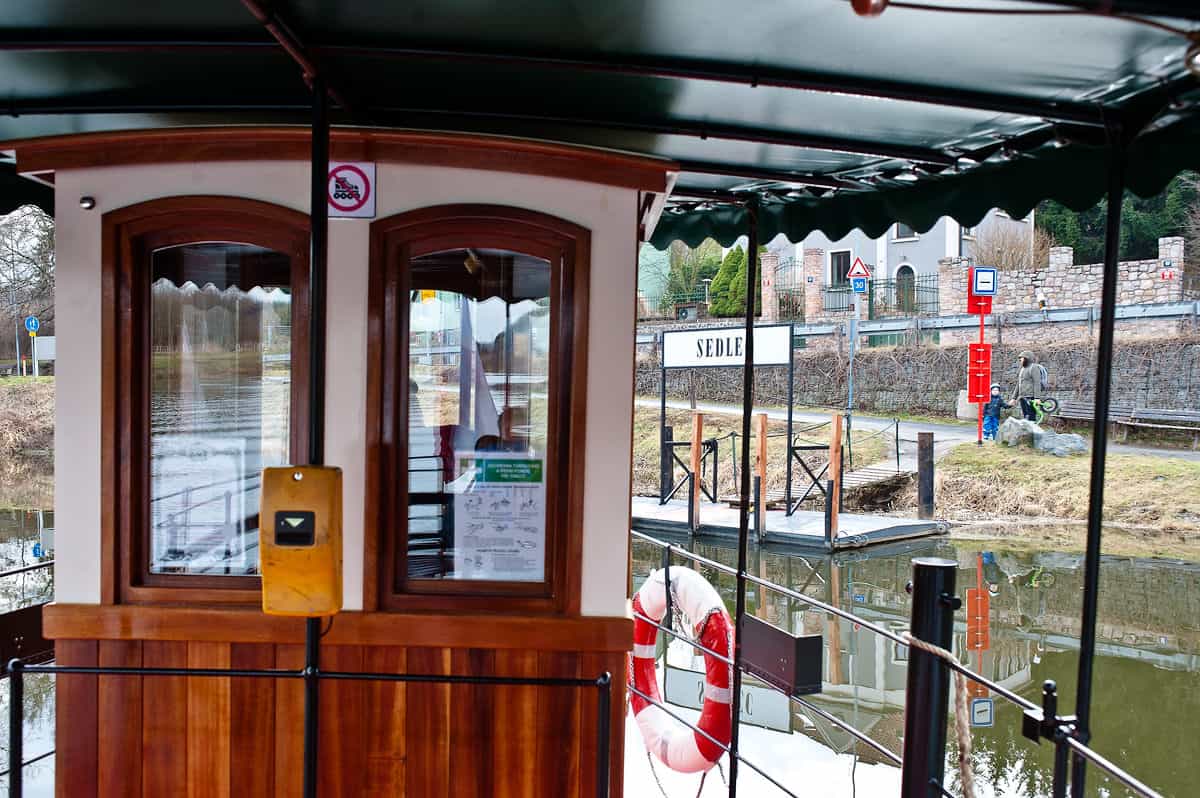The Vltava river divides Prague in two parts. Many bridges connect the two parts of the city, Charles Bridge being most famous. However, in some places no bridges have been built. To avoid long detours in areas without a bridge a number of small passenger ferries cross the river. On a recent trip to Prague we spent some time to travel with two of these Prague ferries.
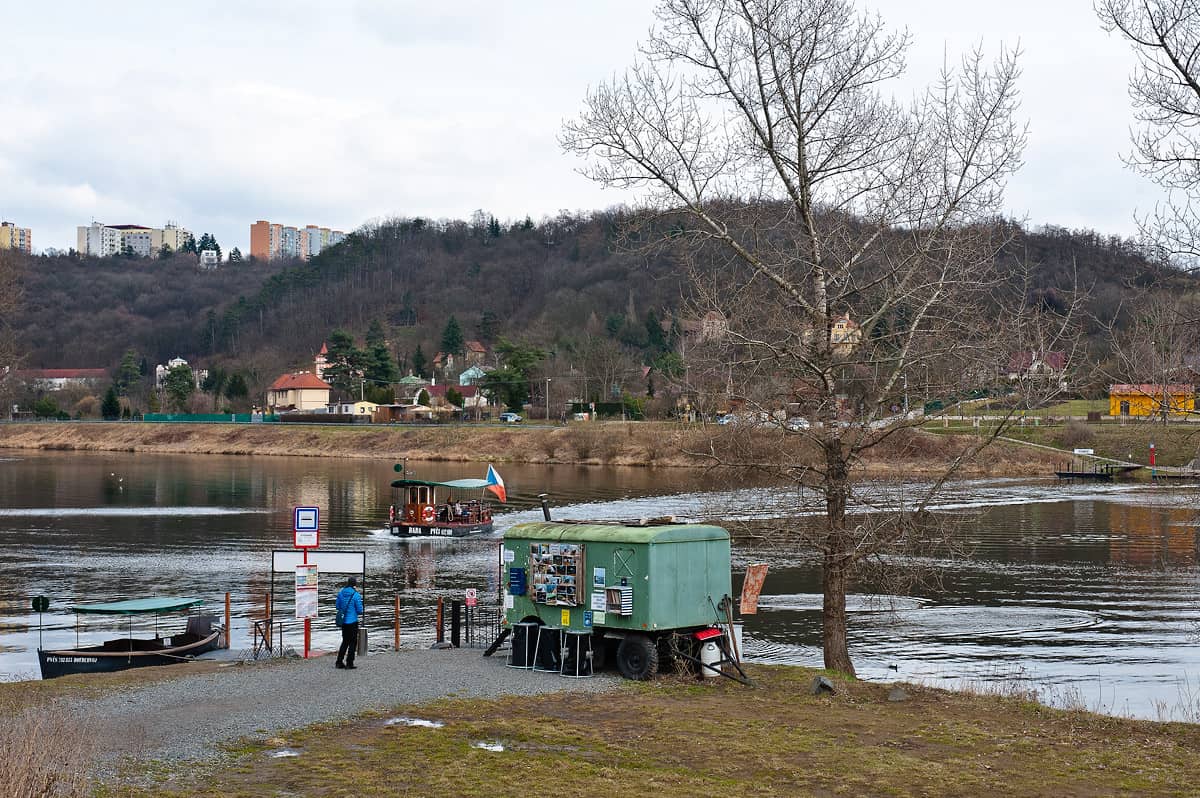
The Prague Ferries p1 and p2
On our trip we travelled with the ferries P1 and P2 in the north of Prague. These are the only ferries operating all year. The other ferry lines run only from April to October. While the other ferries mainly operate for touristic purposes, P1 and P2 are vital for the locals as there is no bridge across the Vtlava for many kilometres in that area.
We took tram 18 from the city to the terminus, Podbaba station. From here you walk about ten minutes along the Vltava river until you reach the Podbabe pier down by the river. Alternatively you can also directly go to the pier by bus, the stop is called "V Podbabě". However we preferred to travel by tram and then walk.
P2 ferry runs every ten minutes from Podbabě across the river to Podhoří. When we arrived at the pier a ferry boat was just about the land. The ferryman than made a short break and we were not allowed to get on the boat. Only when the ferryman returned we were let on the ferry. We had day tickets for all public transport in Prague which include all ferry lines. A 24 hour ticket costs 110 CZK. Read more about public transport in Prague. The ride across the river is very short and just takes about one or two minutes. From Podhoří you can reach Prague Zoo as well as the beautiful Troja Palace on foot. However, we decided to have a walk in the opposite direction, downstream to P1 ferry.
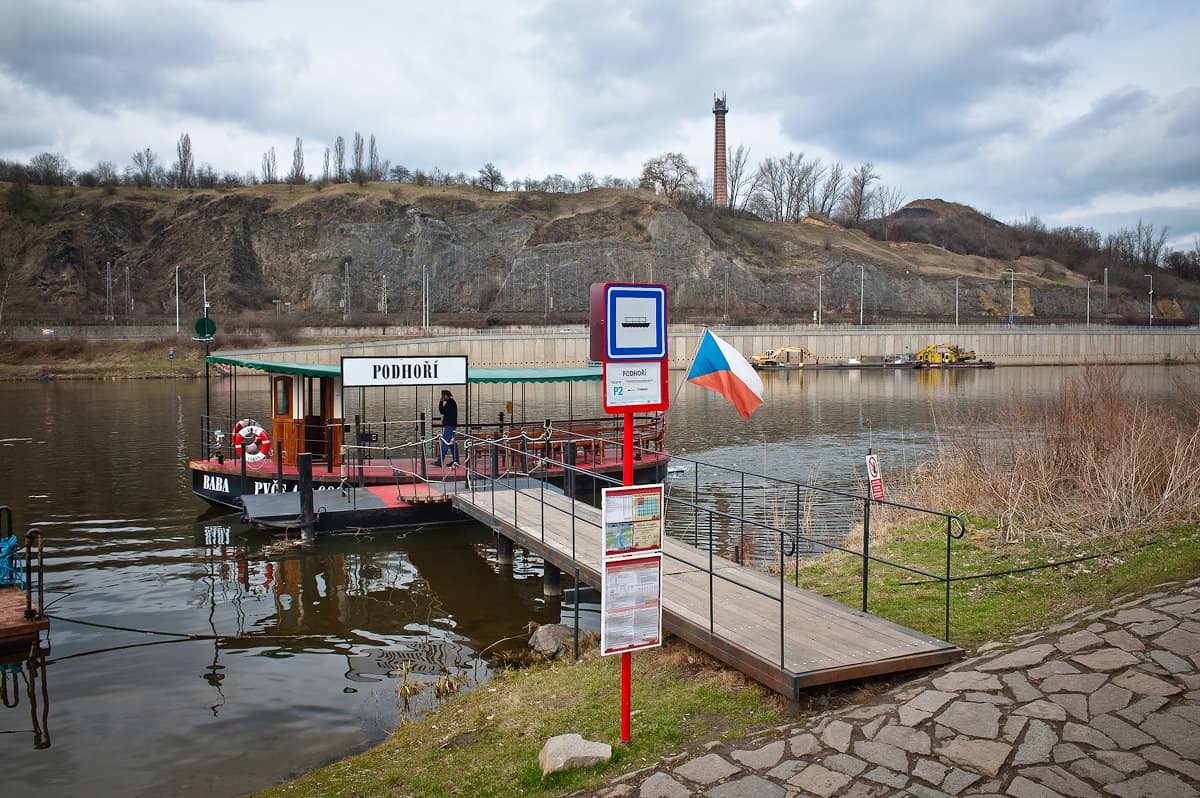
Pleasant walk along the Vltava
From the Podhoří pier we walked along the Vltava river. The pedestrianized street directly by the river is popular with runners, cyclists and walkers. Along the way a number of taverns offer simple food, coffee and drinks. The walk is perfect to get away from the hustle and bustly of the city centre.
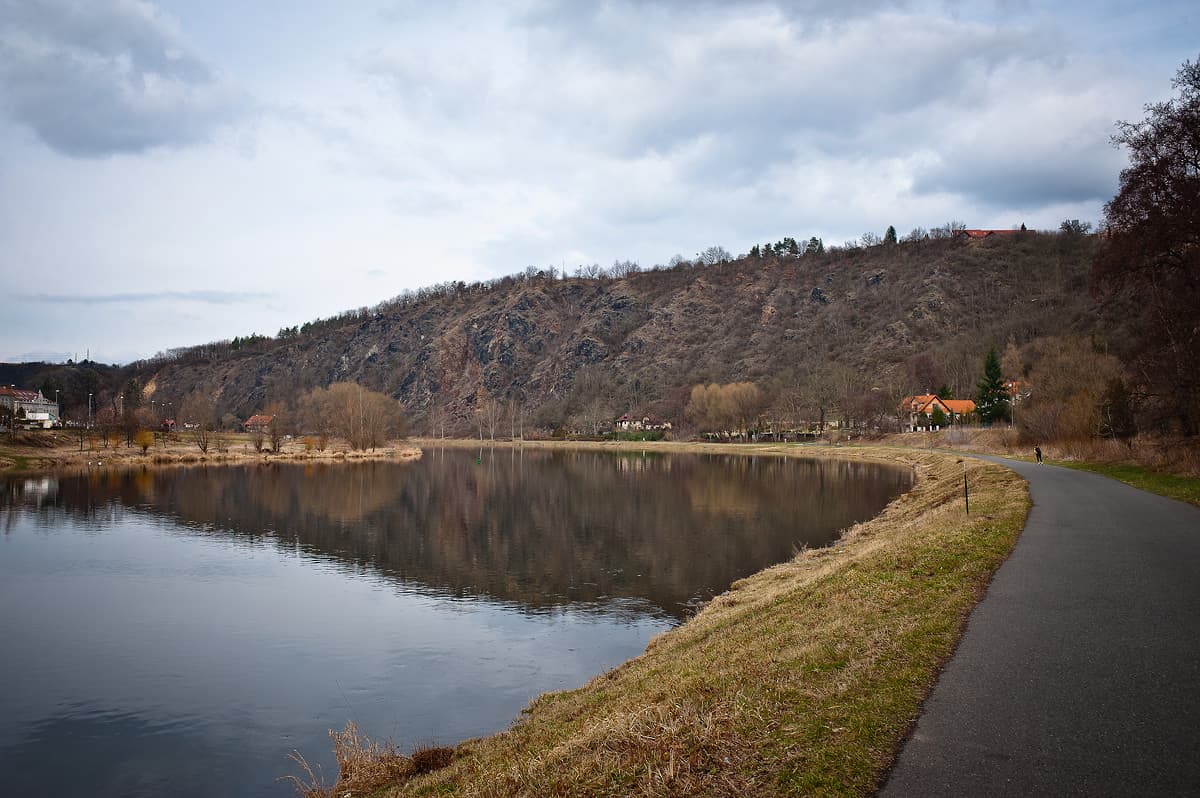
After about half an hour we reached the Zámky pier of P1 ferry. This ferry is even smaller than P2 with only 12 passengers allowed on the boat. It runs every 15 minutes in the "peak" hours and only every 30 minutes during the day. We were lucky to arrive just in time for the departure for the next ferry so didn't have to wait very long. The P1 ferries have a connection to the Prague suburban "Esko" trains on the opposite river bank.
We quickly arrived on the other bank of Vltava at Sedlec pier. From here you can reach the train station Sedlec within a short walk (about 5 minutes). At Sedlec there are frequent Esko trains (every 15 minutes during the week) to Prague. Esko S4 runs to Praha Masarykovo in the city centre, while S41 runs to Libeň station which is a bit away from the centre. If you happen to take a S41 train, get off at Holešovice station from where you can quickly reach the city centre by metro.
Back to the city centre with ESKO suburban Train
Anyway, we missed the S4 train since we were busy taking photos. It didn't matter much though because the next train, a S41 service, was an old classic Czech EMU: a vintage Class 451 "City Frog" from the 1960s. Only five of these trains remain in service, the rest of them has been replaced by modern double deck Class 471 "City Elefant". We enjoyed the ride with the old train to Libeň and took a tramway from there back to the city centre. UPDATE: Class 451 has been finally withdrawn from service in 2018... :(
The other Prague Ferries: P3, P5, P6, P7
As mentioned before there are several other ferries in other parts of the city. These only operate from April to October, so we had no chance to try these out this time. You can find a map of all Prague ferries here. Probably the most interesting of the Prague ferries is P5 just south of the city centre. It connects Smíchov district with Vyšehrad castle and the island of Císařská louka.
We had a great time travelling with the Prague ferries and can only recommend to make a trip with one of the lines during your stay in Prague. If you have questions about your train trip to Prague, you can contact us here and in the rail.cc forum
Update: November 2018
👁 14376



